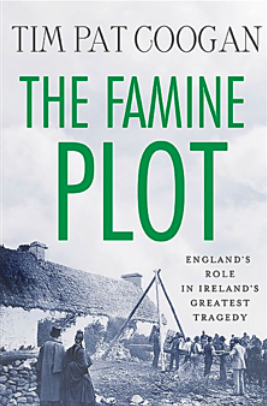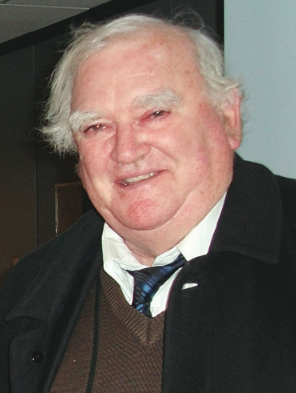The Heart-Stopping Cinema of Michael Haneke ◆ by Craig J. Clark
This has been a long time coming, but it appears uncompromising Austrian filmmaker Michael Haneke is finally starting to gain some mainstream acceptance in the United States — that is, if the multiple Academy Awards nominations for his last two films are anything to go by. Between them, 2009’s The White Ribbon and last year’s Amour were nominated for seven Oscars, with two nods for Best Foreign Film (which Amour won), Best Cinematography, Best Picture, Best Director, Best Actress and Best Original Screenplay. That’s not bad for a period piece about the nature of evil and a heavy drama about a couple facing their mortality with grim determination. Hardly what one would consider feel-good films, but Haneke has never been interested in coddling audiences or providing them with easy answers to life’s problems.
That hard-line stance goes all the way to his first feature, The Seventh Continent, which was released in 1989 and is one of his most quietly devastating efforts. It also illustrates his early propensity for formal experimentation, breaking the action down into three distinct parts. The first takes place in 1987 and observes engineer Dieter Berner, optician Birgit Doll and their young daughter Leni Tanzer as they go about their daily routines. Nothing that unusual happens; we just watch them (usually from a distance or framed in such a way that their faces aren’t visible) as they do all the mundane things one has to do to get through the day. Part two, which takes place a year later, is structured the same way, and features repetitions of some of the same shots and actions. There are enough subtle differences, though, that an observant viewer will begin to wonder just what Haneke is getting at. Well, what Haneke is getting at is what happens in the third part, which takes place in 1989.
The first clue that something is amiss doesn’t come until nearly an hour in, when Berner casually mentions to Doll that they “have to cancel the newspaper subscription.” It’s at that moment, when the characters reveal that they have crossed some kind of threshold without telling us, that the dread starts to mount. There’s one mention that they’re immigrating to Australia (the seventh continent of the title), but it soon becomes clear that they have an entirely different destination in mind. What that is I leave the reader to discover for themselves if they so choose.
For his second feature, 1992’s Benny’s Video, Haneke ventured into Atom Egoyan territory with his story of a teenage boy (Arno Frisch) who is obsessed with capturing images on videotape and then playing them back repeatedly. A child of affluent parents, Frisch is also in the habit of renting violent movies and listening to loud rock music while he’s holed up in his room, a practice disapproved of by his father (Ulrich Mühe), but his mother (Angela Winkler) doesn’t find it too troubling. Maybe if she had a look at some of the videos he’s taken and edited together, she would.
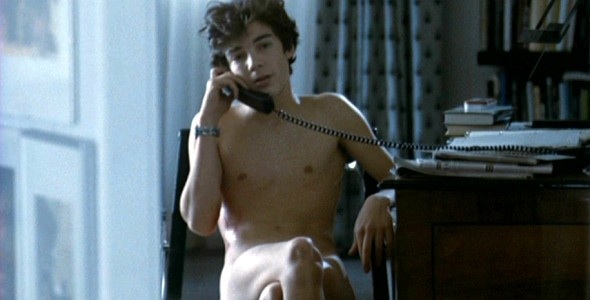
“Benny’s Video”
■
Provocatively, the film opens with footage of a real pig being killed with a captive bolt pistol (similar to the one favored by Anton Chigurh in No Country for Old Men). And if that’s not disturbing enough, the video is rewound and played back in slow motion, and then a third time when Frisch shows his set-up to a girl that he meets outside the video store he frequents. Conveniently, his parents are away for the weekend when he brings her home, so when he kills her with the same weapon that was used on the pig, he has time to coolly clean everything up. The only thing he doesn’t do is dispose of the body, as his parents discover to their horror when they get home. From the way they go about dealing with the problem, though, it becomes pretty clear how Frisch became so dispassionate that he could take a human life without batting an eye.
The final part of Haneke’s “glaciation trilogy” was 1994’s 71 Fragments of a Chronology of Chance, which tells the backstory of a young gunman’s rampage at an Austrian bank by breaking it down into bite-sized narrative chunks spread out over the two months leading up to it. Rather than explain how the event comes to pass or why each of his eventual victims was there when it happened, though, Haneke teases out just enough information with each fragment to give the audience the chance to figure out how they all connect (or not, as the case may be). As such, there is no one central character to latch onto (not even the murderer), but we do come back to a few of them enough times to get a feel for how they pass their days in the shadow of looming tragedy.
Meanwhile, Haneke starts each day (there are five depicted in the film) with news reports on unrest and violence in places like Somalia, Haiti, Northern Ireland, Turkey, Lebanon and Bosnia, as well as an in-depth look at the Michael Jackson child abuse scandal that was consuming a lot of media attention at the time. I’m sure Haneke is making some kind of point about how easy it is for people to lose perspective (the Jackson case is given as much weight as all of the other stories, if not more), but the main thing one takes away from the film is that there are no easy answers. And apart from the gunman, whose death by his own hand is revealed in a title card at the top of the film, we never find out the fate of any of the other characters. That may be frustrating to some, but anybody who appreciates not being spoon-fed will have much to chew on after all 71 fragments have been slotted into place.
Next up for Haneke was his adaptation of Franz Kafka’s unfinished novel The Castle, which had previously inspired some aspects of Steven Soderbergh’s Kafka. Made in 1997 for Austrian television, its story concerns a land surveyor (Ulrich Mühe, the father from Benny’s Video) who arrives in a snowbound village, having been summoned by the Castle, only to find that his services are no longer required — nor were they ever, apparently. Mühe attempts to gain entrance to the Castle, but is frustrated at every turn, and it doesn’t help that he’s been assigned a pair of interchangeable assistants (Frank Giering and Felix Eitner) who make quite a nuisance of themselves. He also takes up with barmaid Susanne Lothar when he finds out she’s the mistress of a high-ranking official, but how he expects to get anywhere that way is frankly beyond me.
Things get more complicated from there — much, much more complicated — as Mühe peels away the layers of bureaucracy and obfuscation only to find more where they came from. His relationship with Lothar also becomes a major distraction, and like everything else he tries it gets him no closer to gaining entrance to the Castle, but by the end there are people trying to get to close to him because of his perceived connections there. At least Mühe remains sane enough to appreciate the irony of that.
Haneke’s next theatrical feature, made the same year as The Castle, was Funny Games, which is one of his more notorious films (made even more so by the fact that he remade it shot for shot a decade later). Briefly, it’s about two unfailingly polite young men who show up at the vacation home of a nice, upper middle class family and proceed to terrorize the hell out of them. It’s difficult to say any more about the plot without giving the “game” away, but the whole thing starts with a simple request for eggs and, before it’s over, they’re not the only things that end up getting broken.
It’s instructive to watch Funny Games in tandem with The Castle since Ulrich Mühe plays the hapless father and Susanne Lothar is his wife. Haneke even recasts one of Mühe’s unhelpful assistants (Frank Giering) as one of their tormentors, and the other (Arno Frisch) had played the title character in Benny’s Video, so he was well-versed in the art of inflicting randomly cruel violence on others. Of course, Haneke chooses to only show us its after-effects, scrupulously keeping the actual acts of violence (with one notable exception) offscreen. This is much appreciated considering some of the worst offenses are committed against the couple’s child, making this a film that disturbs as much as it enrages.
For an encore, Haneke puzzled out 2000’s Code Unknown: Incomplete Tales of Several Journeys, which is a companion piece of sorts to 71 Fragments of a Chronology of Chance since it presents a series of interlocking stories about people whose lives intersect in ways both ordinary and unexpected. The main focal point is Juliette Binoche, who plays an actress working on a thriller that we get to see in various stages of rehearsal and shooting, but we also spend time with her photojournalist boyfriend (who seems most at home in the middle of war zones), his younger brother (who yearns to escape from the family farm), a young African (who takes offense to the brother’s treatment of a beggar), his father (who drives a cab to support his family), and a Romanian immigrant (who winds up getting deported since she was in the country illegally). As with 71 Fragments, Haneke leaves it up to the viewer to figure out how their stories fit together.
While Funny Games and Code Unknown were both in competition at Cannes, and Code Unknown received a special Prize of the Ecumenical Jury, Haneke moved one step closer to the coveted Palme d’Or with 2001’s The Piano Teacher, which was awarded the Grand Prix (the second-highest prize at the festival), plus Best Actor and Actress. As anyone who’s seen the film can attest, Isabelle Huppert definitely deserved the latter for diving headfirst into the role of a deranged music professor who enters into a sado-masochistic relationship with a student (Best Actor winner Benoît Magimel) whose aggressive nature both attracts and repels her. Then again, it doesn’t help that she has the worst stage mother this side of Barbara Hershey in Black Swan, which is all the more pathetic when one considers that Huppert is clearly in her 40s and therefore has little chance of being “discovered.” Not only does she still live at home, but her overbearing mother is constantly checking up on her, which probably accounts for why she has so many sexual and emotional hang-ups.

“The Piano Teacher”
■
As is frequently the case in Haneke’s films, it takes some time for Huppert to reveal the depths of her psychosis. The camera dispassionately observes her in uncomfortably long takes while she engages in erratic behavior which becomes increasingly dangerous, both to herself and others. Her passive-aggressiveness even compels her to destroy a student’s chances of playing professionally just before an important recital. Little wonder, then, that Magimel tells her, “It’s totally sick what you’re doing here.” That’s as may be, but it doesn’t prevent him from coming back for more.
Huppert returned for 2003’s Time of the Wolf, an apocalyptic tale that shows how the world ends, neither with a bang nor a whimper, but rather with uncertainty, misery, and the high probability of death by exposure and/or starvation. Set during an unnamed calamity that spurs city dwellers Huppert and Daniel Duval to stock up on some essentials and flee to the country with their children, the film immediately puts them at a disadvantage since another family has beaten them to their cabin and the father has a gun. This means the supposed safe haven where they were planning on waiting out the catastrophe instead puts them face to face (for the first of many times) with desperate people who will do whatever is necessary to hold onto what little they’ve got. After Duval is taken out of the picture, Huppert tries her best to provide for herself and her children, finding food and shelter where neither is easy to come by.
Much like the similarly themed Children of Men and The Road, Time of the Wolf is bleak pretty much from the word go, and it only gets bleaker as it goes on. Even so, there are some starkly beautiful images on display, with Haneke going the Stanley Kubrick route by shooting all of the night scenes by firelight. (One such tracking shot features Huppert and her children walking past a row of farm animals that have been killed and set ablaze — an image both poetic and horrifying at the same time.) It may not be a comforting vision, but few people go into a Michael Haneke film expecting to be reassured about their place in the world.
Another winner at Cannes (earning him Best Director and two other awards), 2005’s Caché found Haneke on the threshold of a crossover success that seemed unlikely just a few years earlier. A tense drama about a man unwilling to face up to his past mistakes, it stars Daniel Auteuil as the host of a popular public television program who starts receiving creepy videotapes showing the exterior of the house he shares with book editor Juliette Binoche and their preteen son. The premise is similar to the opening scenes of David Lynch’s Lost Highway, but whereas Lynch quickly branches off into other, stranger avenues, Haneke stays firmly rooted in reality as the tapes (and the gruesome drawings and postcards that begin arriving with them) chip away at Auteuil’s long-dormant conscience. But what does he have to feel guilty about and why does he feel compelled to keep secrets from his wife and son?
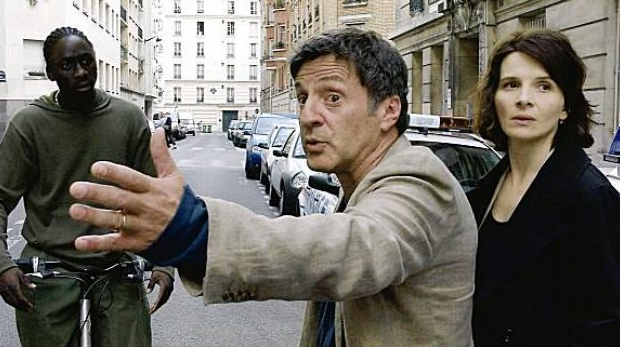
“Caché”
■
Without giving too much away, Auteuil eventually receives a tape that leads him to the apartment of a mysterious Algerian man (Maurice Bénichou) who’s cagey about the connection between them when a clearly agitated Auteuil shows up at his door. He also has a memorable confrontation with the man’s son (Walid Afkir), but that only comes after an event that I wouldn’t dream in a million years of spoiling. Haneke’s films may be deliberately paced, but that only serves to make the shocks more effective when they do come.
For his first (and, so far, only) English-language film, Haneke followed in the footsteps of The Vanishing‘s George Sluizer and Nightwatch‘s Ole Bornedal by remaking one of his own films. In his case he chose Funny Games, casting Naomi Watts and Tim Roth as the affluent couple whose home is invaded and Michael Pitt and Brady Corbet as the ones doing the invading. Both films are equally effective (it all depends on whether you prefer to read subtitles or not), but Pitt and Corbet make for very ingratiating home invaders and the games they come up with are designed for maximum discomfort, both for the “players” and for the audience.
Before Amour, Haneke’s biggest success, both domestically and internationally, was The White Ribbon, which stands apart from the rest of his filmography thanks to its period setting and Christian Berger’s stark black-and-white cinematography, which perfectly evokes the place and time (a small German village in the months leading up to the outbreak of World War I). The imagery also captures the outlook of the villagers, many of whom see everything as strictly black or white. As Haneke deftly illustrates, that sort of environment is a veritable breeding ground for intolerance and corruption.
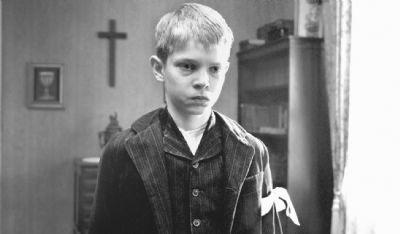
“White Ribbon”
■
If anyone could be said to be at the center of everything, it would be the village schoolteacher (Christian Friedel), who narrates the film from the vantage point of some unspecified time in the future. His main concern, both in the past and the present, is his tentative courtship with the local baron and baroness’s nanny (Leonie Benesch), a girl of 17 who is unjustly dismissed after an incident that doesn’t even involve a child under her care. The incident is far from the first, or the last, though, and most seem to somehow involve the older children of the local pastor (Burghart Klaussner), whose ideas about punishment always seem to outstrip the misbehavior involved. Then there is the doctor (Rainer Bock), who’s carrying on an affair with the town midwife (Susanne Lothar, returning from The Castle and the original Funny Games), which turns out to be the least of his transgressions. With role models like these, it’s no wonder the children lack a proper moral compass.
Firmly back in the present, Haneke’s second Palme d’Or winner in a row was Amour, which is that rare thing: a tearjerker that conjures up profound emotions without having to ladle on the sappy strings or Nicholas Sparks sunsets. Rather, it uses the most straightforward method of telling the story of a man (Jean-Louis Trintignant) who watches helplessly while his wife (Emmanuelle Riva) incrementally slips away from him. After all, who needs cheap melodramatics when you’ve got two actors with more than a century of film-acting experience between them?
The film opens with the story’s end, as the fire department breaks into Trintignant and Riva’s apartment and finds her dead with flower petals strewn about her room. It then flashes back to the night of another break-in, which the couple missed because they were attending a piano recital given by one of her former students. Apart from that all seems well, but the following morning Riva zones out for a few minutes during breakfast, which raises a red flag for Trintignant. “We can’t pretend nothing happened,” he says, and next thing we know Riva has had an operation, but it apparently did more harm than good because when she comes home she’s in a wheelchair and has lost the use of the right side of her body. It’s quite understandable, then, that she makes him promise never to take her back to the hospital, even if it will cause him great distress to keep it.
For the most part, Trintignant and Riva exist in isolation, save for the occasional visits from helpful neighbors and their daughter (Isabelle Huppert), who fills them in on her problems (a philandering husband, a directionless son) and grows increasingly concerned about Riva’s condition, which deteriorates rapidly. In a matter of weeks she goes from zipping around in her motorized wheelchair (the introduction of which provides a rare moment of levity) to being confined to her bed and barely capable of speech. Given the range of emotion she has to express, I’m not surprised she received an Oscar nomination for Best Actress, but Trintignant is equally deserving of recognition for his work here. I’m sure it will be a long time before I see another pair of lived-in performances such as these.
[
Editor’s note:
The Seventh Continent, Benny’s Video, 71 Fragments of a Chronology of Chance, Caché, Code Unknown, The Piano Teacher and The White Ribbon can all be viewed on Netflix.]
▲
The Ryder, March 2013




